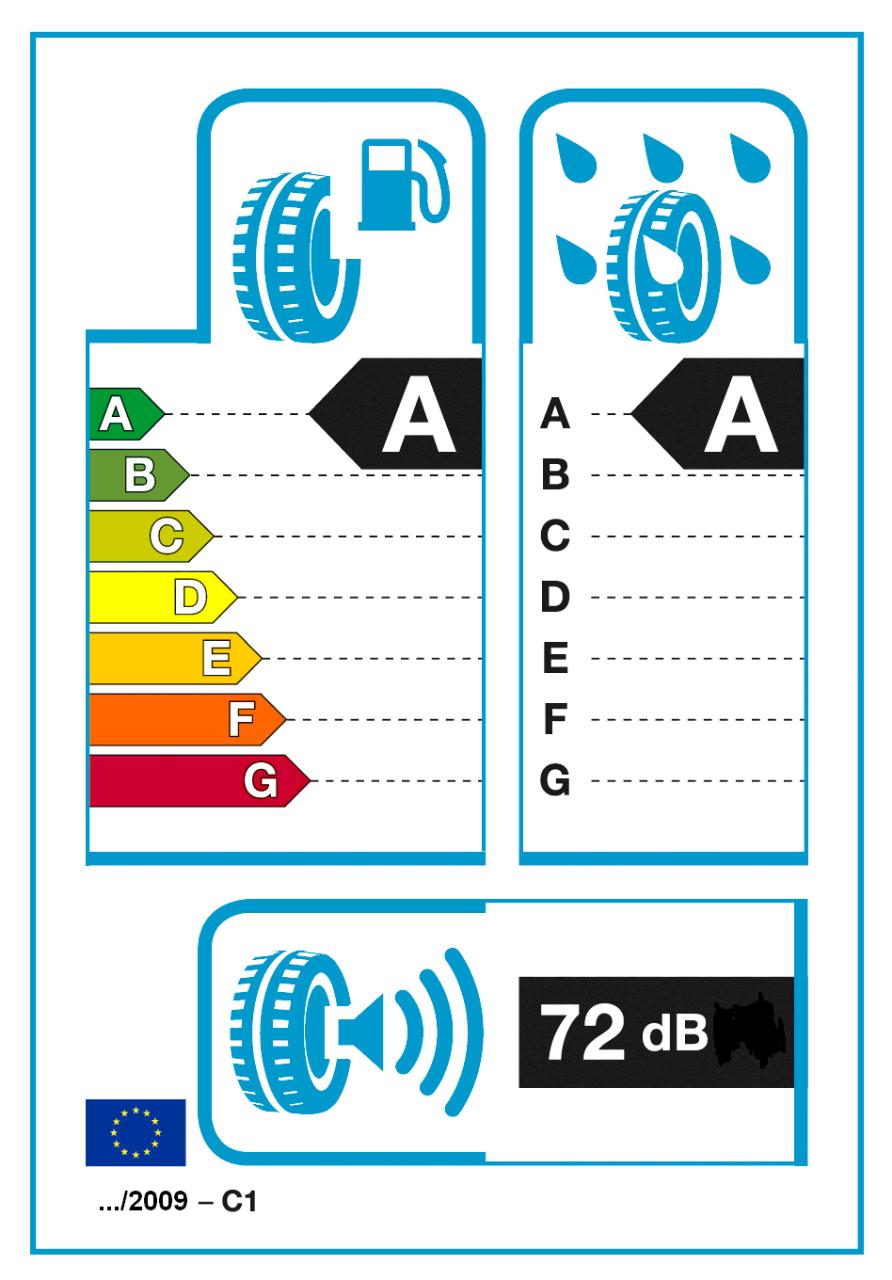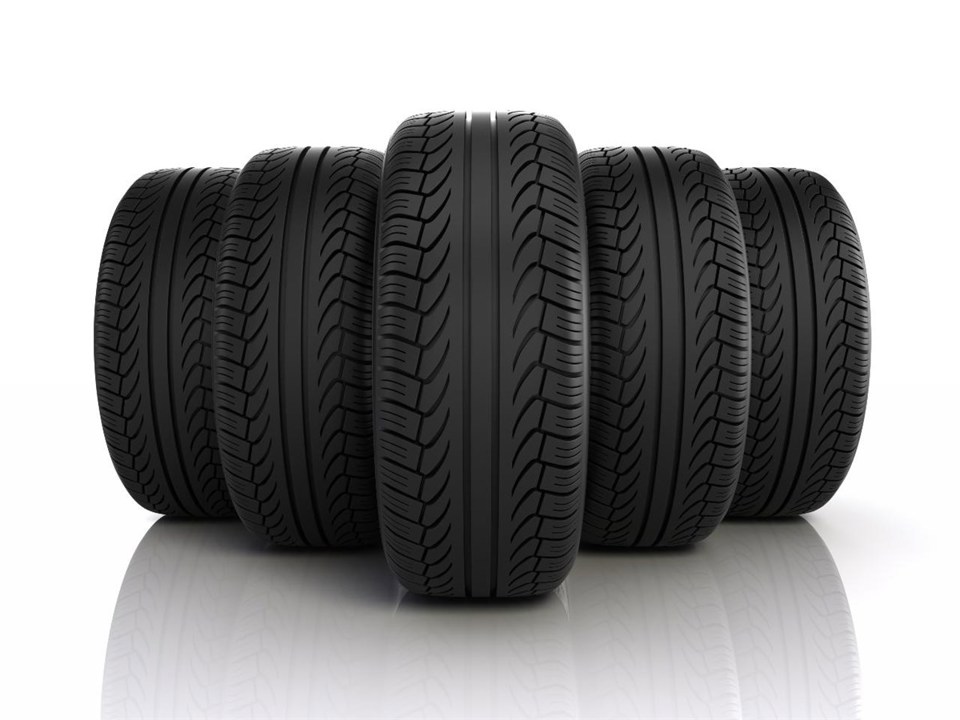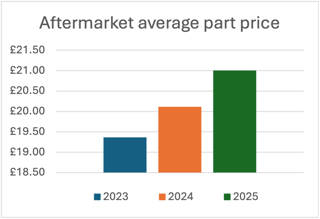New tyre labelling laws are now in place and dealer service departments will have to make sure they are up to speed with the new requirements.
Since July the tyre industry has begun labelling each of the 35 million tyres sold annually in the UK to explain fuel efficiency, safety and external noise levels, in compliance with European Union directives.
From November 1, 2012 it is a legal requirement for franchised dealers to display the new label on all replacement tyres they sell, and for their service advisers to be able to explain the label information to customers.
Fuel efficiency (rolling resistance) and safety (wet grip) will be categorised using a seven grade ranking scale, with a coloured band similar to the new car CO2 labels. According to the Tyre Industry Federation, a top-ranked A-grade tyre could out-perform the lowest-ranked G-grade tyre by 30% for safety and 7.5% for fuel efficiency. This translates to a vehicle stopping three to four car lengths shorter from 50mph and an average fuel cost saving of around £100.
The information could help dealers when explaining the costs involved in choosing or fitting more expensive tyres.
Educating drivers about tyre labelling also gives dealers a chance to remind them about maintaining correct tyre pressures and regularly checking tread depth, both services they can provide through their seasonal vehicle health checks. A message for the customer is that there is limited benefit in specifying a premium tyre with a good labelling rating if the vehicle is subsequently driven on under-inflated tyres.
Paul Everitt, Society of Motor Manufacturers and Traders chief executive, said: “Before this label, customers only had price and brand to distinguish between more than 300 different types of tyres; now motorists have a set of comparable factors to make buying decisions easier.”
What dealers need to do
The tyre label will apply to car and sports utility vehicle (SUV) tyres, van tyres and truck tyres but not to re-treaded tyres, off-road tyres, spare tyres or vintage car tyres. The following is guidance for dealers from the Tyre Industry Federation.
- Phone enquiry: Make the consumer aware of the availability of regulatory information regarding fuel efficiency, wet grip and rolling noise and direct them to websites or promotional material.
- Phone conversation leading to an order: Before completion of the transaction, provide the consumer with the fuel efficiency class, wet grip class and rolling noise class and measured value of the tyres subject to the order.
- Online enquiry: Provide the consumer with the fuel efficiency class, wet grip class and rolling noise class and measured value of the tyres offered for sale.
- Sale conducted at the dealership: At the time of the purchasing decision, ensure either the tyre stickers are visible to the consumer or the labels relating to the tyres on offer are shown to the consumer.
- All transactions: State the fuel efficiency, noise and wet grip classes on invoices presented to the consumer when tyres are purchased.
The Deparment for Transport (DfT) has not yet announced which agency will enforce tyre labelling or what the penalties will be for non-compliance.
Dealers briefed
Franchised dealers and garages subscribed to the OFT-backed Motor Codes garage scheme have been briefed with the latest information to provide advice to motorists on the new tyre labelling legislation. Tyre wholesalers have also been pre-paring their retail partners and attempting to engage consumers directly through digital marketing.
Mike Welch at Blackcircles said it is making sure every garage on its network is aware of the rights and responsibilities that arise from this law, and it is issuing a detailed guide before the law becomes active.
Some tyre companies have expressed concern at the limitations of the tyre label. It gives no measure of other crucial aspects for consumers to consider, such as dry braking distances, cornering performance and lifetime mileage.
Kerry Watts, manager consumer fleet business at Goodyear Dunlop, said that from a tyre manufacturer’s perspective tyre labelling is quite a big deal: “Outside fit for purpose it’s the first time that we’ll have a performance requirement to sell a tyre.”
But he said an A-rating was difficult to reach in all aspects. “It’s challenging to develop tyres that achieve the top grades across all aspects of the EU tyre label, while continuing to deliver high performance in other relevant areas such as dry braking, handling, high speed stability, mileage or aquaplaning.
“Given we develop our tyre portfolio on a wide range of perform-ance criteria that can total in excess of 50 different factors, our goal is always to deliver a well-balanced tyre that performs well across the board,” he said.
Continental echoed his view. It considered the tyre label to be a real breakthrough in providing standard performance data, but said that it only shows three of more than 14 important tyre performance criteria.
Peter Robb, Continental’s brand manager, said that there is “an engineering conflict” between providing the lowest rolling resistance and the best wet grip. To achieve a double A-rating a tyre manufacturer needs to compromise in other areas.
“Safety is the first thing,” he says. “We could engineer a tyre with an A-rating for fuel efficiency but it wouldn’t grip as easily. We won’t ever compromise safety.”
Robb recommends that customers stick with the tyre that is originally fitted as it will have been through significantly more testing.
Labels explained
 The wet grip and rolling resistance ratings will be displayed as coloured bands from A-G, A being the best and G being the worst.
The wet grip and rolling resistance ratings will be displayed as coloured bands from A-G, A being the best and G being the worst.
External noise will be measured in decibels and split into three categories represented by black sound waves.
For fuel efficiency, the difference between each grade means a reduction or increase in fuel consumption of between 2.5%-4.5%.
For wet grip, the difference between each grade is a stopping distance of between 3-6 meters when travelling at 50mph.
For noise, one sound-wave means that the tyre is 3db quieter than the new, tighter future European limit. Two sound-waves mean that it is already compliant with the future European limit and three sound-waves mean it is only compliant with the current limits.






















Kel Prince - 01/11/2012 15:11
Typical EU overkill ! It is noted that DFT has not yet decided who will monitor the scheme. Could I suggest that it is given to whoever is responsible for monitoring number plate sales and who have NEVER checked our register and have never decided what to do with displaced plates (to be found in skips)